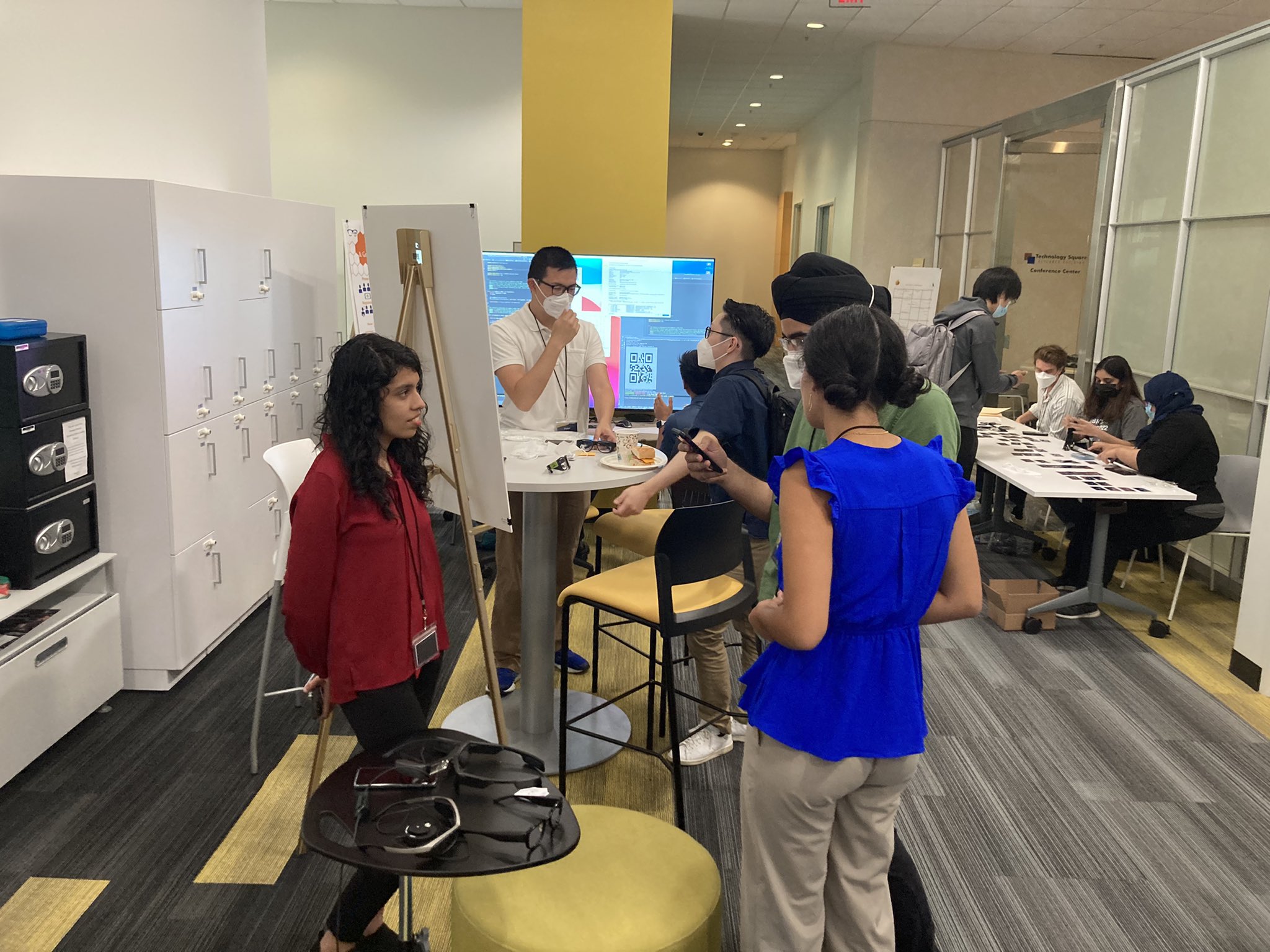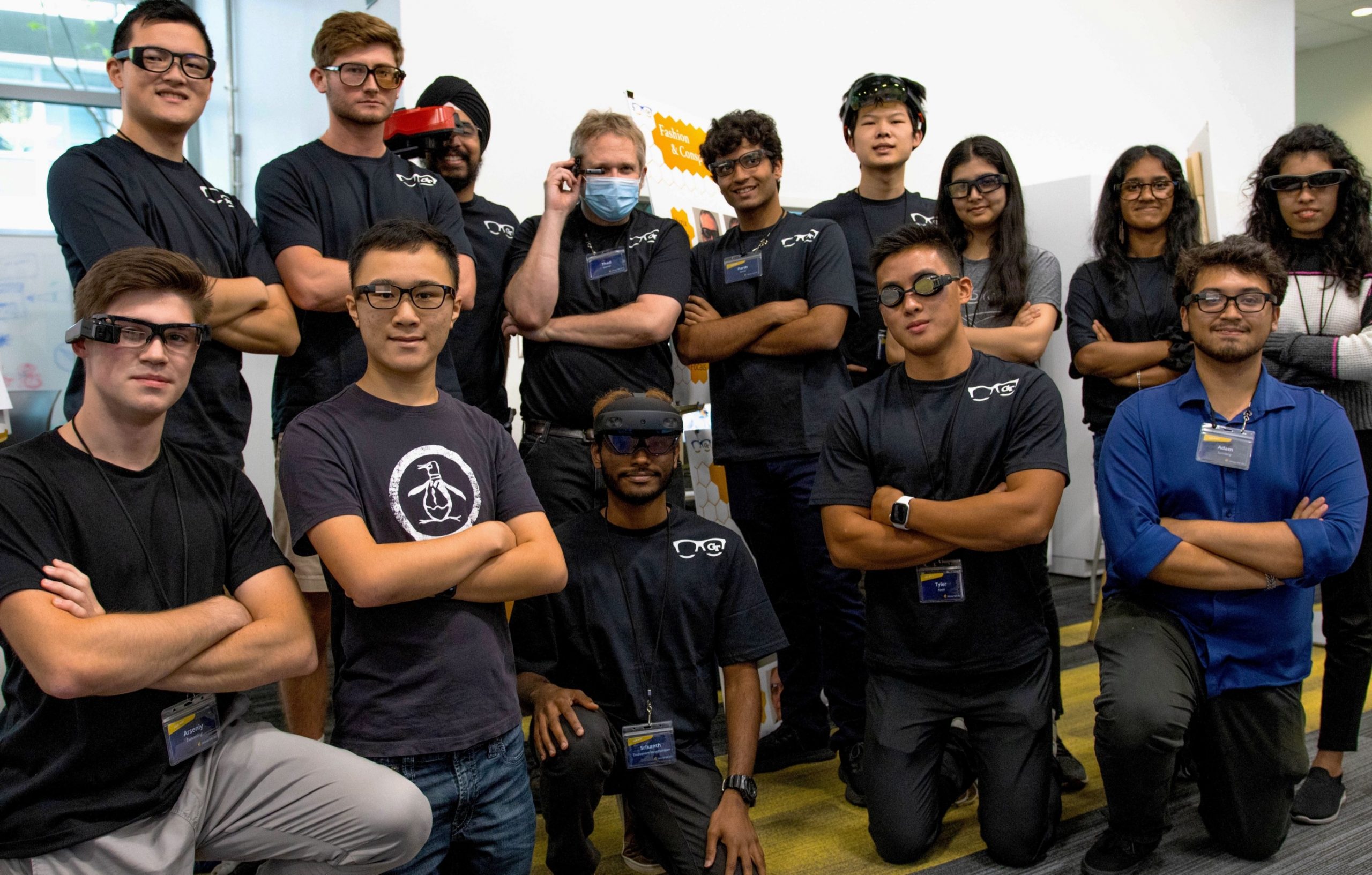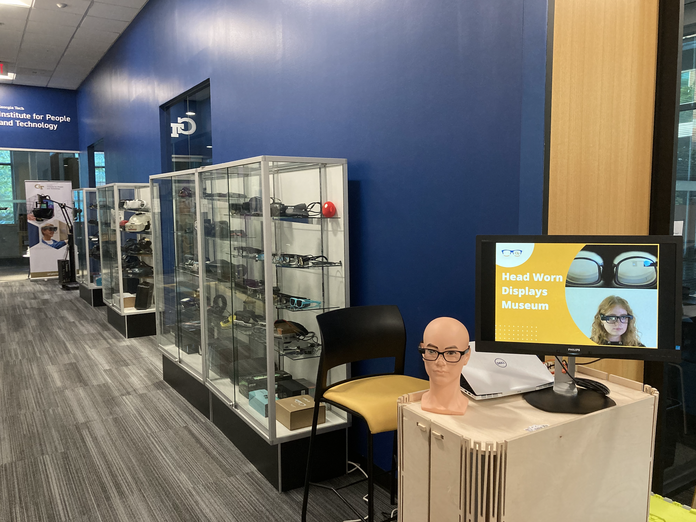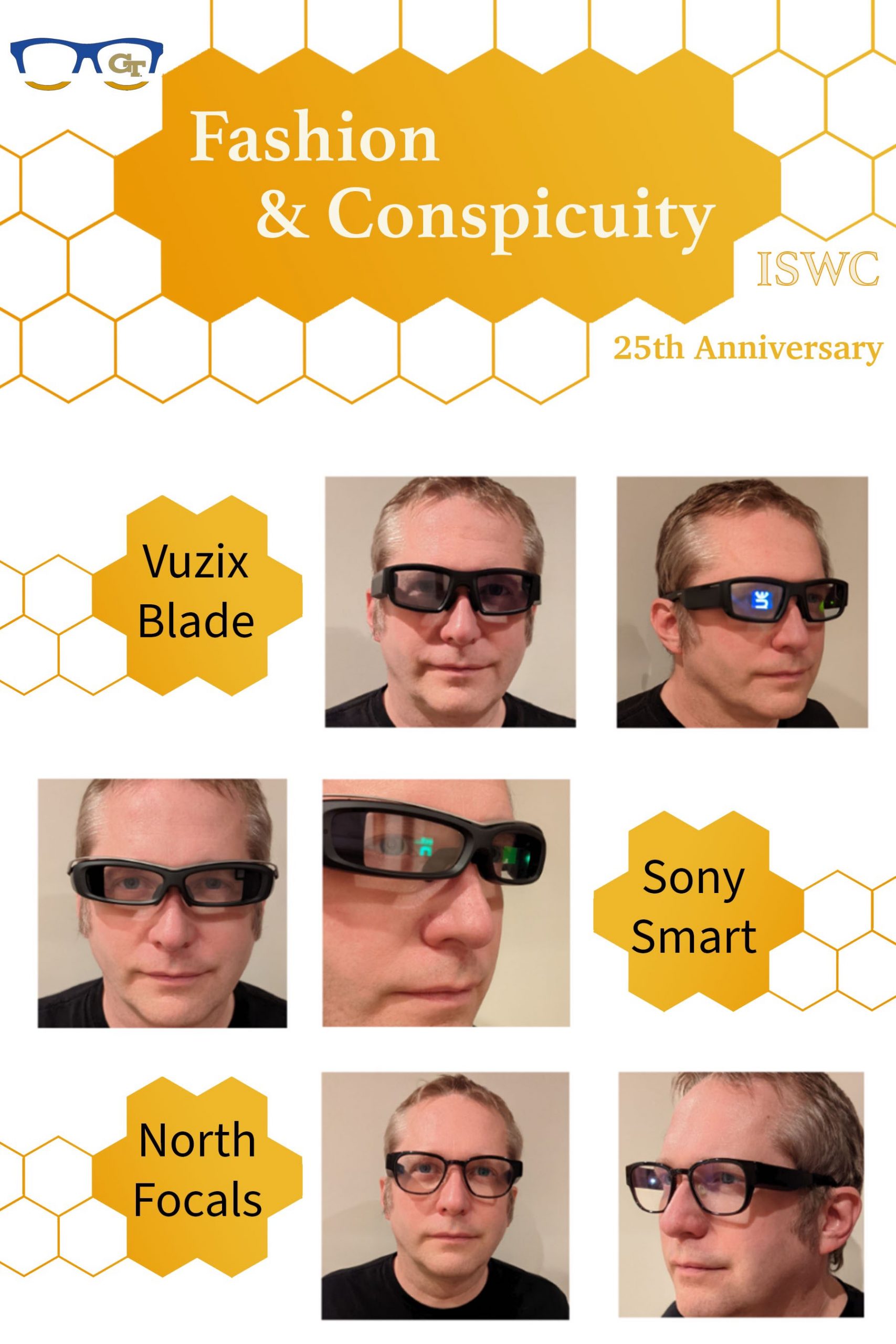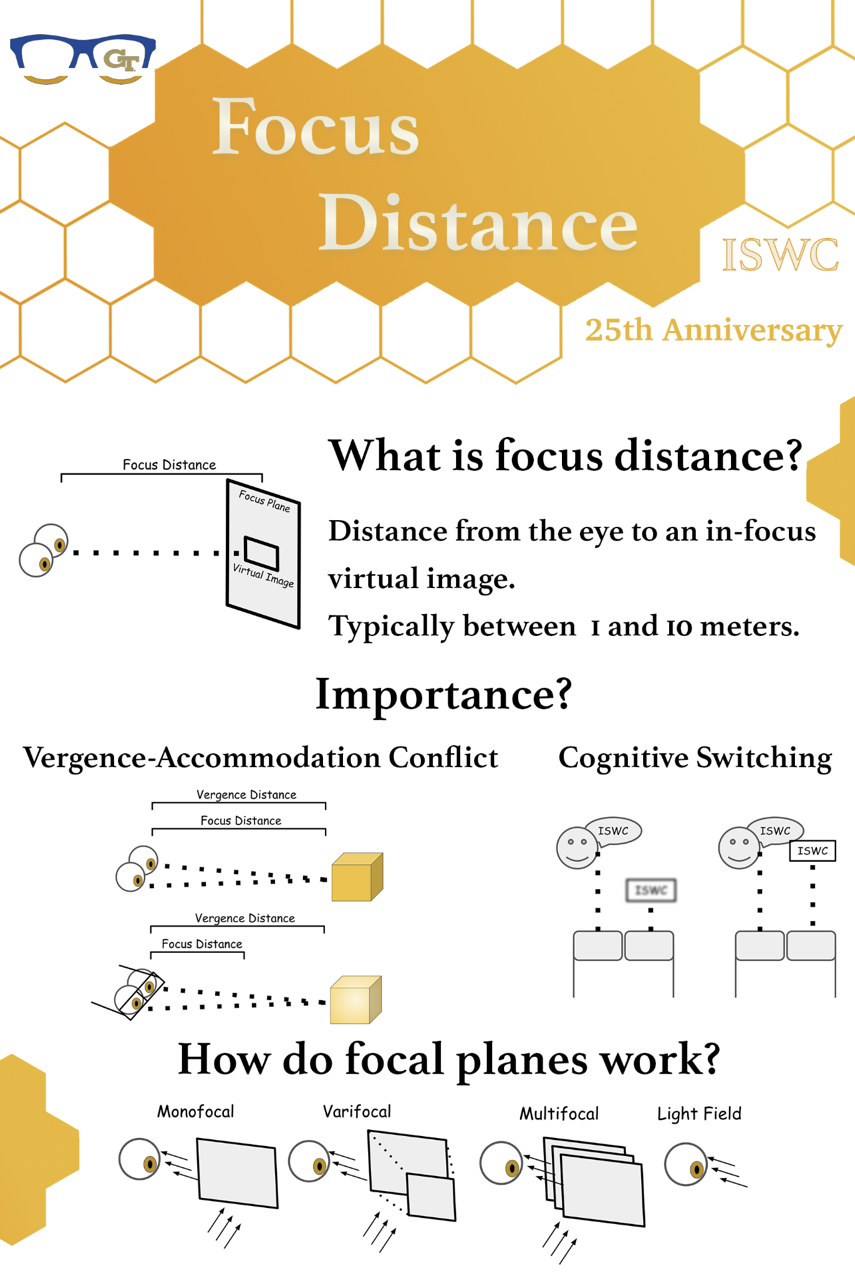HWD Exhibition – ISWC 25th Anniversary
Rajandeep Singh, Thad Starner
Georgia Institute of Technology
The head-worn display (HWD) exhibition was organized by the Contextual Computing Group led by Prof. Thad Starner to commemorate the 25th Anniversary of ISWC. The exhibition taught attendees some of the biggest challenges of making HWDs for everyday wear. Attendees experienced live demos of the most popular HWDs of recent years and learned what the headsets did right and where challenges still remain. Attendees also received guided tours of one of the world’s largest personal collections of HWDs and learned how the field has transformed over the last 30 years.
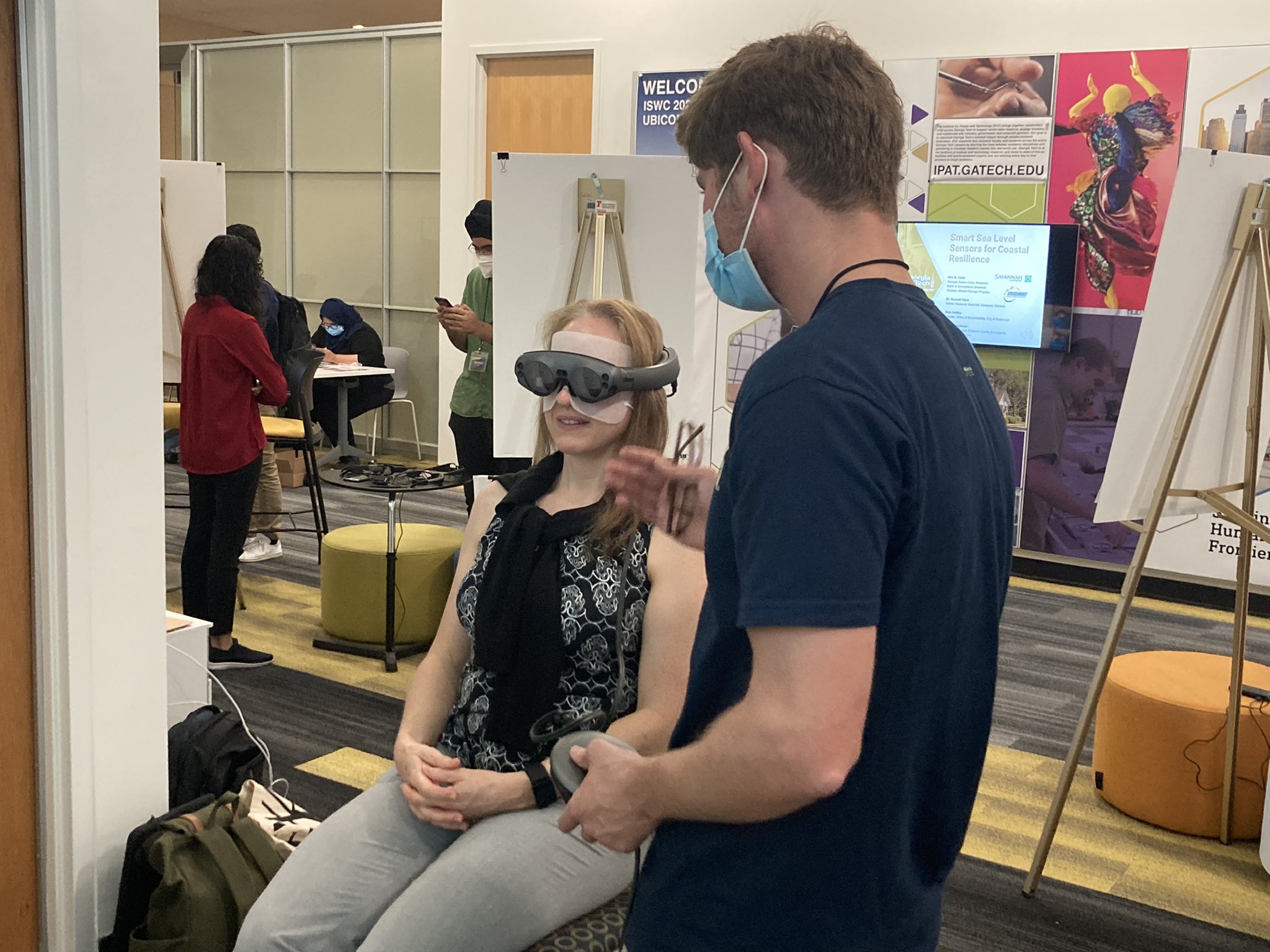
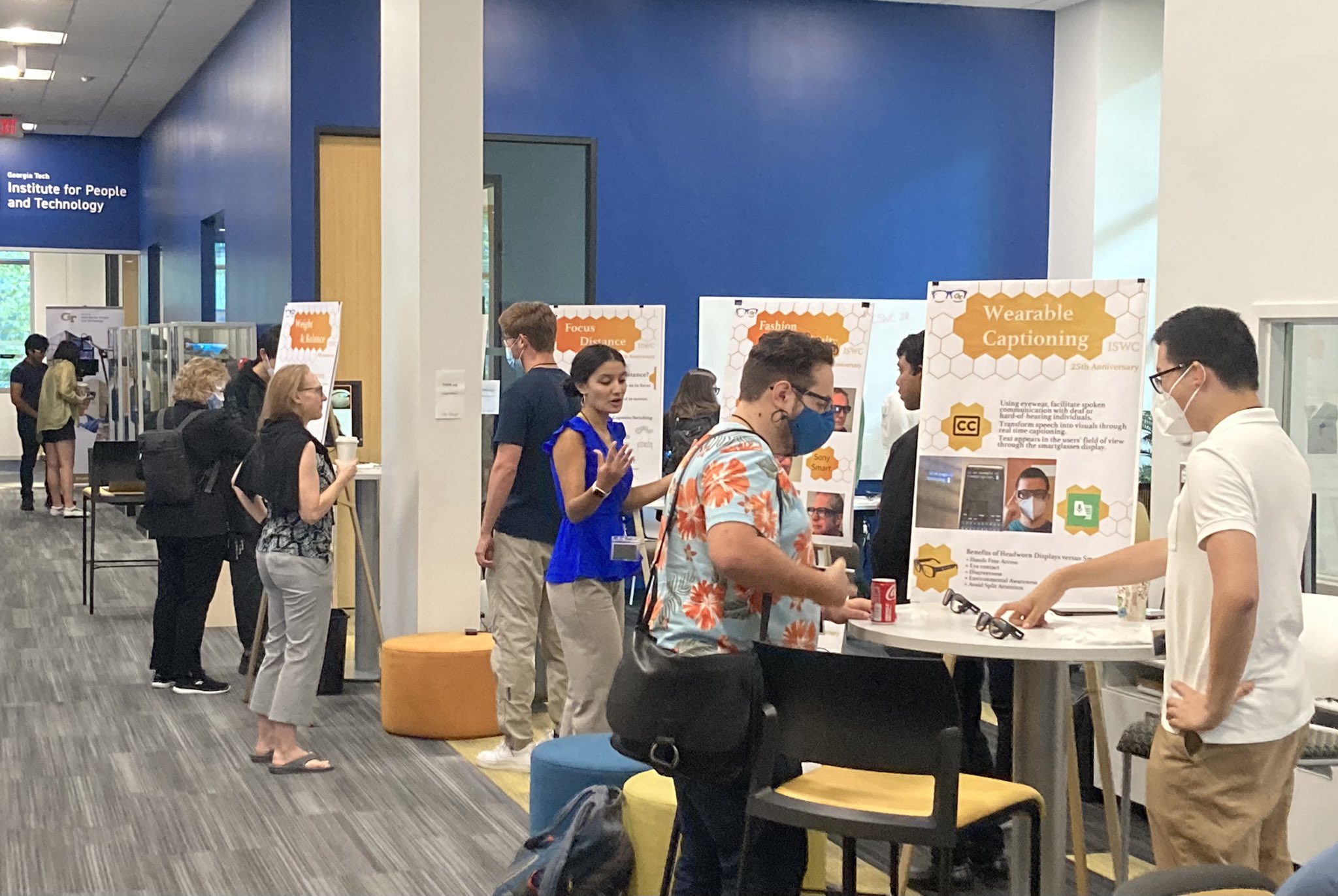
HWD Museum
Mohit Pinninti, Parth Arora, Arseniy Tsinzerling
Everyone knows about the flagship head-worn displays of today: the Google Glass or Microsoft’s Hololens. But for every product currently being sold, there are many previous devices, and many R&D prototypes that never see the light of day. To understand the complex technology that went into these technological miracles, we can investigate the design choices made by previous manufacturers by taking a tour of one of the largest collections of head-worn displays in the world, owned by Professor Thad Starner.
Virtual Research made some early headsets, dating back to 1991, which wasn’t much more than a projector with LEEP optics attached to a bike helmet. A few years later came the Proview, a headset designed to display information to a pilot in real time. Sony’s Glasstron, released in 1996, was among the first families of augmented reality headsets that were commonly available for commercial use over an extended period of time. Each of these headsets help popularize head-worn displays, making them seem like a real possibility beyond the fantastical experiences that were commonly found in movies.
More recently, augmented reality headsets are becoming more prevalent in a wider range of use cases. Though still used to show information near the user’s face, headsets have specifically been created for many types of outdoor activities, including headsets for biking, Aeris’ Compumask and Oceanic’s Datamask for diving, and even Recon Instruments’ Micro Optics Display for showing speed, maps, and messages while skiing or snowboarding.
Even the most modern headsets still have a long list of improvements to make. We gave attendees an opportunity to wear modern head-worn displays, including Hololens 2, Glass Enterprise Edition 2, and Magic Leap, while addressing the most common problems that are still unsolved. Thus attendees were able to experience the top technology while still identifying room for improvement in modern head-worn displays.
Captions and Field of View 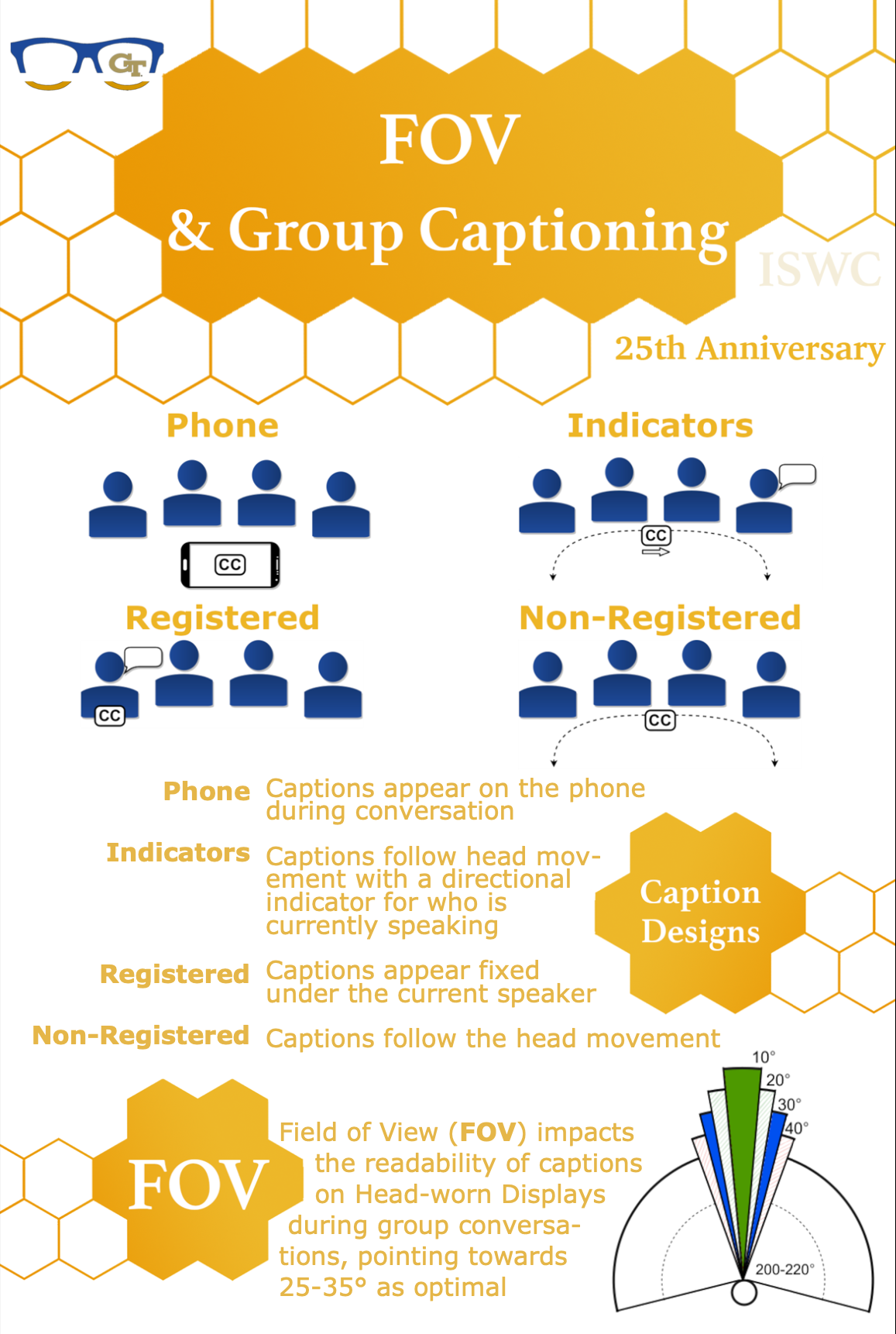
David Martin, Tyler Kwok, Adam Sumilong
Imagine if you were required to divide your attention between the speaker and your phone for every conversation you have, what information would you miss? This situation is an everyday reality for many Deaf and Hard of Hearing (DHH) individuals who rely on phone transcription when speaking with hearing people.
To better foster accessible conversations for the DHH, we investigate the optimal caption designs for use on a Head-Worn Display (HWD) using an emulated system on a very large monitor. This system allows us to understand the technical requirements for a HWD to be used for captions in a group conversation. To compare to current experience, the exhibit emulates the experience of using a smartphone versus HWD for captions. It tests two behaviors for HWD caption designs: captions that remain in your line of sight or captions that remain fixed to the person speaking. In addition, captions may show a directional indicator for who is speaking. We also emulated
different fields-of-view (FOV) to help determine the minimum needed for DHH captioning.

Wearable Captioning
Peter Feng
For individuals who are deaf and/or hard-of-hearing, captioning infrastructure which allows them to read transcriptions of their conversations in real time can be really useful. A lot of captioning tools exist, such as Google’s Live Transcribe, but most run and display captions on mobile devices. Smartphones present certain challenges while using these tools, such as needing a hand free at all times to hold the device, increased difficulty in maintaining eye contact during conversations, and drawing attention to oneself.
The wearable captioning project is a prototype headworn display based transcription system that integrates the Tooz smartglasses and Google’s Speech-to-Text Cloud service to perform live captioning on a HWD. The project aims to address the challenges with using captioning on a mobile device by replacing it with a subtle HWD.
Attendees were able to try on the glasses themselves and see their conversations transcribed into the display in real time. The demo also helped address challenges of the project such as social perception of HWDs.
Social perception and conspicuity
Aarohi Vaidya, Sofia Vempala
The social acceptability of Head Worn Displays is an ongoing discussion. The appearance and conspicuity of HWDs are especially critical when people with hearing disabilities use them as a captioning aid. A conspicuous design makes for an unpleasant experience as the aid itself draws more attention to their disability.
To answer the question of how “normal-looking” HWDs have to be to avoid causing unnecessary distraction, we have designed an experiment to study and compare the social perception of different HWDs on a day-to-day basis. Attendees were first shown videos of casual interactions of people wearing a pair of smart glasses and then asked questions aiming to understand their perception of the interactions. Attendees got a chance to try various HWDs and identify different visual artifacts that significantly impacted the headset’s appearance. This included examples for glint, glair and graybox.
This project is the first step in understanding and improving the social perception of HWDs by creating a framework to reliably test their social acceptance and create an industry-accepted standard for social acceptability user studies.
Focus Distance
Jonathan Womack
The focus distance of a Head-Worn Display is the distance, range of distances, or ranges of distances at which the virtual image appears to be in focus.
Head-Worn Displays are often used in situations of alternating attention, where the user switches cognitive attention between a task situated in the virtual image and a task in the real world. However, when the user’s accommodation (the distance at which the user’s eye is focused) is different in the virtual and real world task, the eyes’ ciliary muscle must repeatedly reshape the eyes’ lenses to switch between the virtual and physical content. This switching results in visual fatigue and discomfort, while not switching results in image blurring and diplopia.
The exhibit demonstrates different design choices across three commercially available displays. The first demo utilized an Epson BT-300, a mono-focal display, showing when distance of accommodation matched and mismatched the Epson’s focus distance.
The second demo progressed to a multi-focal display – the Magic Leap 1. With the Magic Leap, attendees switched between the two focus distances of around 1 and 3 meters.
The final demo was with the North Focals, a laser beam scanning display from North, which was acquired by Google in 2020. With the Focals, attendees discovered that no matter their accommodation distance, the image was still crisp.
Weight & Balance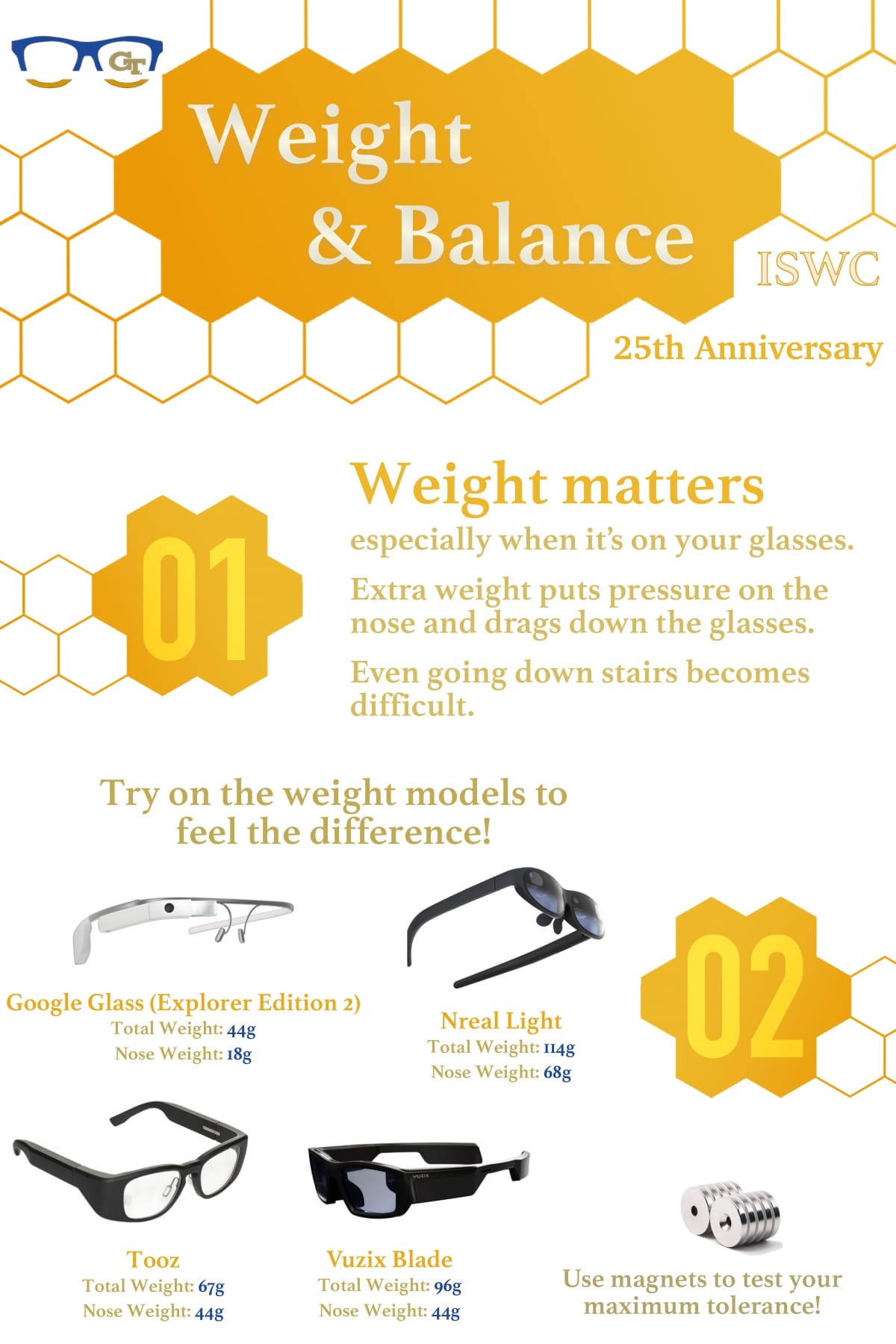
Yukun Song, Priyanka Mosur
Weight is one of the major factors of HWD that would affect user experiences as it determines how long the users can wear the device. Ideally, headsets should have as little nose weight as possible as most people’s maximum tolerance is typically around 30 grams. Larger nose weight can lead to the headset continuously slipping and an overall uncomfortable experience. Other headsets try to evenly distribute the weight throughout the user’s head, which still may lead to an uncomfortable user experience over large periods of time.
In our exhibition, attendees tried different models and configured a custom weight model to what they considered appropriate. We provided equivalent weight models for six popular HWD glasses/headsets in the market: Google Glass (Explorer Edition), Nreal Light, Tooz, Vuzix Blade, Hololens 2, and Magic Leap 1. We created multiple models of the weight distribution of these headsets using prescription glasses with stackable magnets and welding headsets with stackable bolts. Attendees had the ability to customize the weights of the headsets by adding or removing magnets or bolts to test their limit of weight tolerance. They could also borrow these models and wear them over extended periods to further test their tolerance.
Surprisingly, our interaction with the attendees showed that attendees used to wearing glasses stated they could tolerate smaller weights than participants who were not accustomed to eyeglasses. Some attendees valued balance over weight as they would try to counterbalance weight in the front of the headset by adding more at the back.
 Eyebox
Eyebox
Srikanth, Rajandeep Singh
Eyebox is the volume where your eye receives a clear and crisp image from a HWD. An easy way to visualize the eyebox of a HWD is to imagine using binoculars. Binoculars often have a small eyebox and therefore are required to be held steadily to get a clear image. Moving them ever so slightly leads to a clipped or unclear image.
A bigger eyebox allows the headset to be used by a diverse group of people with a wide range of interpupillary distances (IPDs) and head size. A good eyebox also helps keep the image from the HWD in focus while the user’s head is moving and causing the display to shake/slip. A common problem with HWDs with small eyebox is that they will continuously go out of focus or clip while walking, causing distractions and an unpleasant user experience.
As part of the exhibition, attendees could experiment with cardboard prototypes of different eyeboxes which helped visualize the essential concepts. Attendees also tried demos of two HWDs with very differently sized eyeboxes: the Vuzix M100 with a large eyebox and the North Focals with a much smaller eyebox. This experience allowed participants to understand the trade-offs with creating HWDs with a larger eyebox, such as increases in weight and size of optics.


